An edging in your landscape helps give your yard a cleaner, more manicured look. It defines spaces, and helps keep lawns from creeping into flower beds, weeds out of vegetable gardens, and plants from spilling onto walkways. Edging is a somewhat magical gardening tool. It's one of those things that you don't really think about until you see the difference between a yard with it and a yard without it.
Plastic edging from your local hardware store is the least expensive alternative, but it's also one of the least durable and interesting options. Consider a longer-lasting investment with a material that can enhance your garden even more. Edging can set the tone for your entire landscape, so think about what kind of statement you want your garden to make, as well as the functions you want your edging to serve.
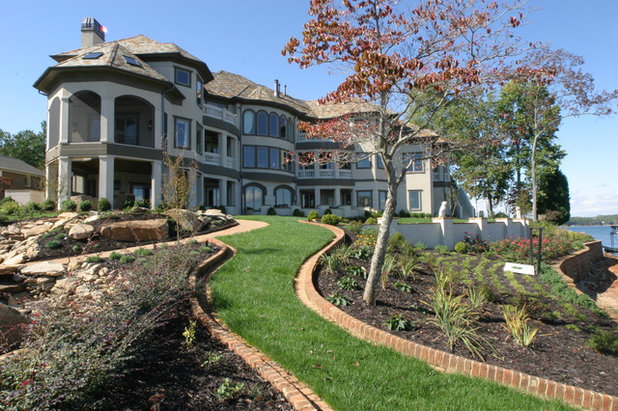
Fowler Interiors
Brick can work in a variety of ways. It can be set vertically with or without grout as a mowing strip for a large space of grass. If you're planning on using the brick as an edging for landscaping too, don't forget to dig a slight trench for them (as in the previous example) to help the plants from spreading underground.
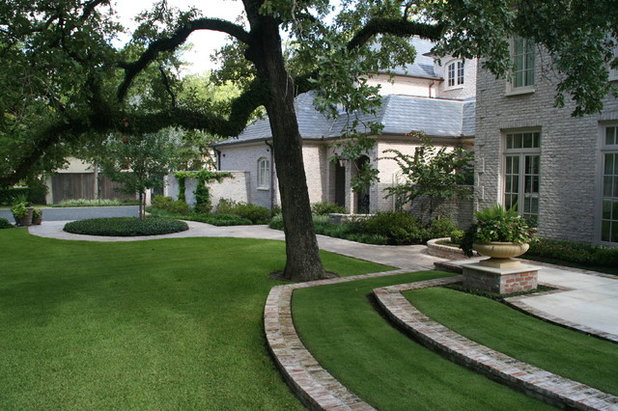
McDugald-Steele
The bricks were used horizontally here — not just as a mowing strip, but as a larger surface for landscaped steps. Any direction works, and installation is about the same — it just depends on how much coverage you want.
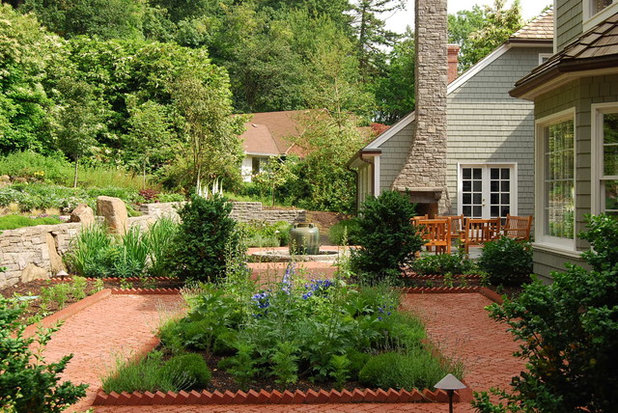
Samuel H. Williamson Associates
Here, it's been installed on the diagonal as a decorative and functional type of edging. A small trench is dug, and the bricks are set in diagonally and covered halfway with soil to keep them in place.
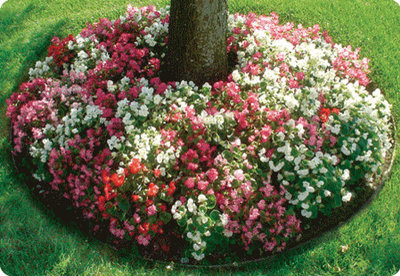
permaloc.com
ProLine Aluminum Edging
Metal edging is extremely durable and works well with gardens and lawns that have both straight and curved borders. This invisible aluminum edging is light and flexible enough to shape around curved beds, but strong enough to withstand the elements.
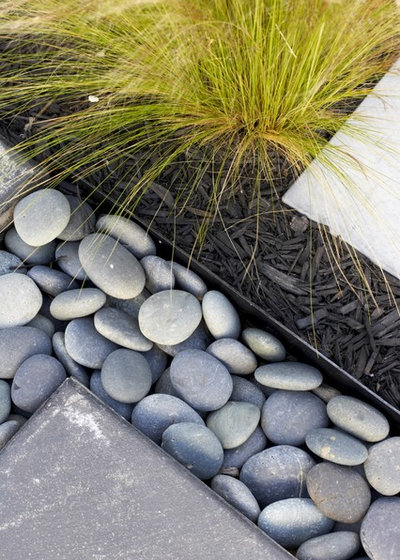
Jeffrey Gordon Smith Landscape Architecture
River stones used as an accent with a metal edge adds visual interest to an otherwise simple setup. The metal edging keeps the stones from spilling over into the landscape, and it also keeps the landscape from crossing over onto the pathway.
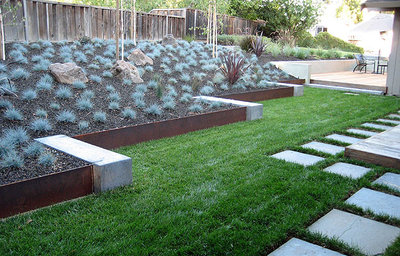
Huettl Landscape Architecture
A combination of concrete and metal in this shot works as a defined edge for the lawn, as a retaining wall for a raised planting bed, and as a design statement in the landscape.
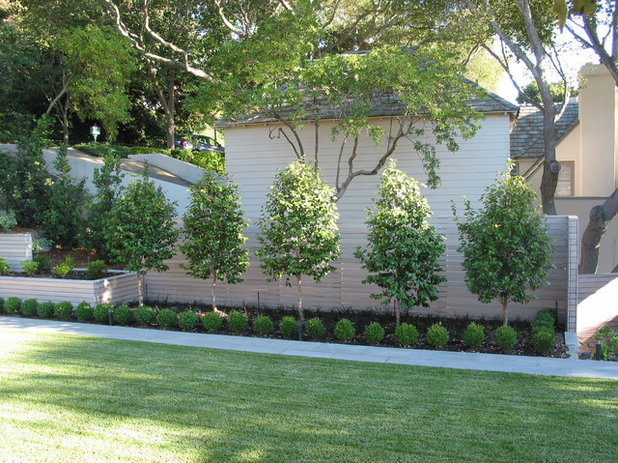
Randy Thueme Design Inc. - Landscape Architecture
Cast concrete edging is often used for its durability and flexible shaping. Since it's a result of custom work, it can allow for virtually any shape of landscape and help outline winding paths and curves. Varying heights can be added to adjust for different types of plants, and its width can be increased to help create small walkways.
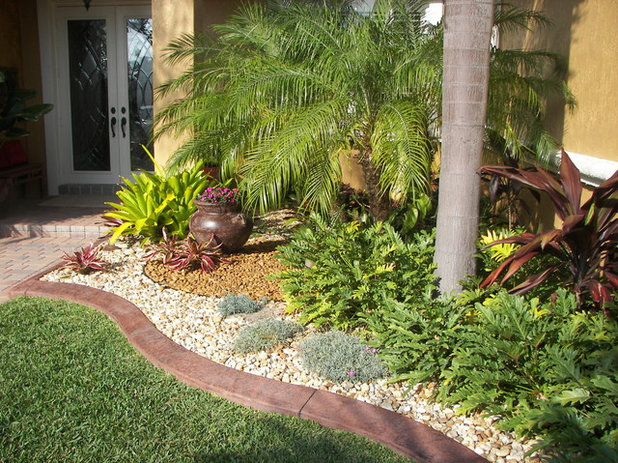
A smooth and low-lying concrete curbing like this separates the lawn from the rest of the landscape and helps protect the other plants while you mow the lawn. I love the contrast here of the cast concrete with the two types of stone.
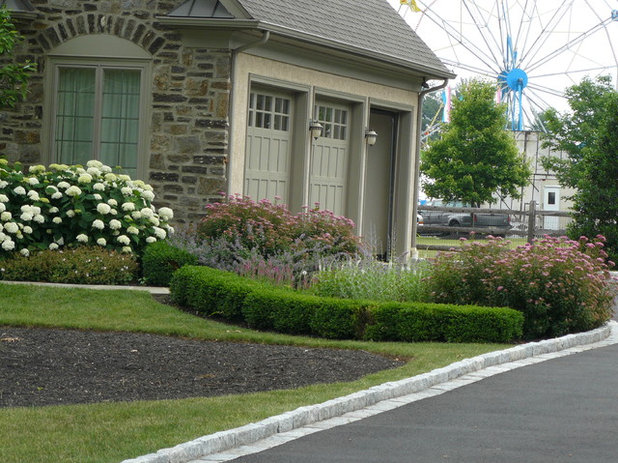
Garrett Churchill Inc.
Pavers and other pre-cast concrete edging are pre-made alternatives to cast concrete that can interlock and fit along borders in straight or curved sections. There are usually some substantial gaps in between each stone, so this isn't always the best option if you're interested in maintaining a strict line between different types of plant life.
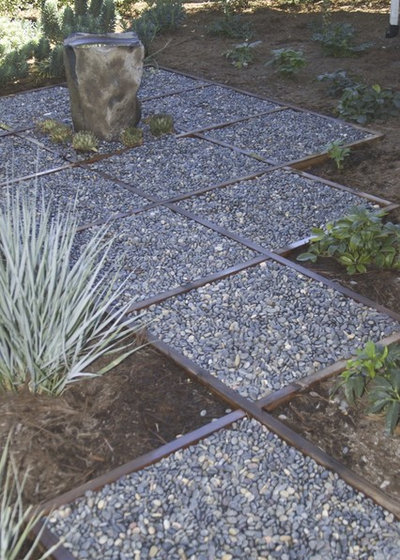
Jeffrey Gordon Smith Landscape Architecture
The
wood edging in this shot is used with gravel to break up a section of landscape. When using wood like this, make sure to treat the wood against rot and use an edging tool to dig a shallow trench for the pieces you install.
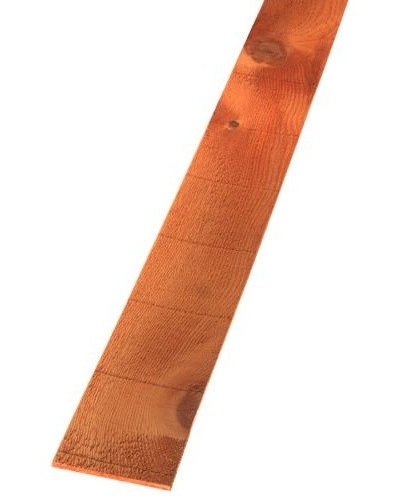
Lowe's
1/4 x 4-10ft STK WRC Green Bender Board
Wood is a beautiful edging material that gives a garden a glowing, warm look. It tends to work best to line the side of a path or lawn. Use a thinner bender board for curved edges and winding pathways. This cedar bender board works wonders as a soft, natural form of landscape edging. Cedar is one of nature's most durable woods. It's highly resistant to decay and insects — making it a natural choice for outdoor use.

Lowe's
COL-MET 14-Gauge Brown Steel Landscape Edging
Durable and easy to install, this steel edging gives your garden or lawn a clean and professional look. This edging comes in 8 inch segments, with four stakes in each segment for simple installation. It's strong and easy to bend and shape, which makes it a good choice for curved borders.
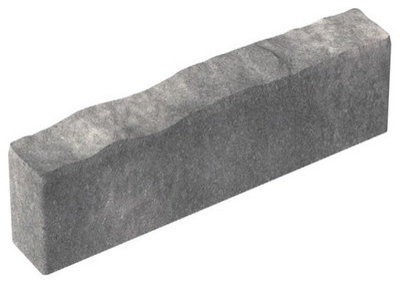
Lowe's
Oldcastle Gray/Charcoal Concrete Calisto Edging - $2.03
If you're looking for a cast concrete look but don't want to invest the time, money, or energy that can require, try for a simple paver that mimics the smooth look of cast concrete.
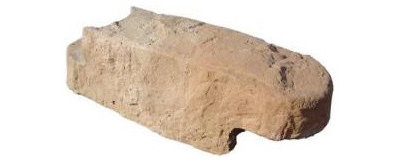
The Home Depot
Belcrete 1 ft. Concrete Edging - $3.49
Pavers come in a wide range of styles and sizes. These provide a more organic and natural look than the standard structured pavers. Use these when you want an edging that melds with the surrounding landscape.
Share: What is your best trick for edging your lawn, path or border?
More:
7 Out-of-the-Box Retaining Wall Ideas
Easy-care Landscaping With Rocks and Boulders
4 Steps to the Perfect Garden





